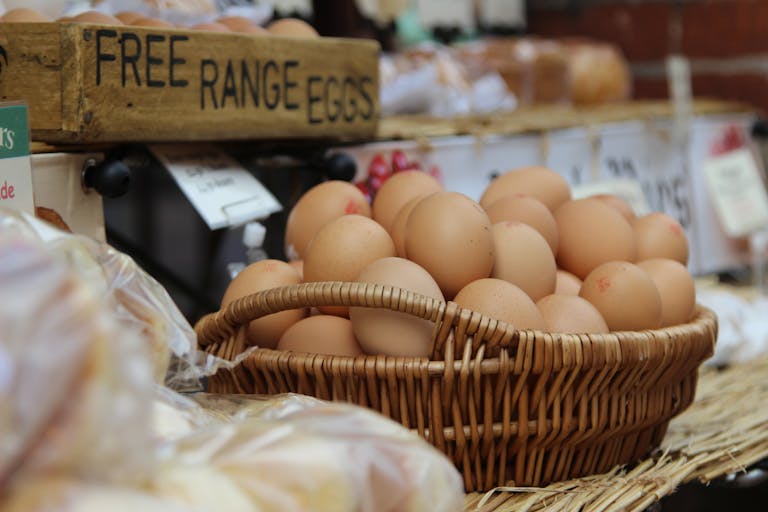How To Tell If a Chicken Is Laying Eggs
Wondering how to tell if a chicken is laying eggs? Whether you’re trying to confirm your pullets have started laying or checking if an older hen is still producing, there are a few reliable ways to spot the difference. Laying hens tend to look and behave a little differently to those that are off-lay, and with a bit of observation and a few gentle checks, you can usually work out what’s going on.
In this post, I’ll run through the key signs that a chicken is laying eggs, how to recognise when one isn’t, and a few practical methods to help confirm who’s laying what.
Natural reasons a chicken might stop laying
Before you start checking your hens, it’s worth knowing that even healthy birds take breaks from laying. Some of the most common causes include:
- Shorter daylight hours – hens need 12–14 hours of light to lay consistently
- Moulting – regrowing feathers takes priority over egg production
- Age – hens typically lay best in their first 2–3 years
- Broodiness – a broody hen will stop laying completely
- Illness or stress – heatwaves, predators, flock changes or parasites can all cause hens to stop laying temporarily
So, if a chicken isn’t laying right now, it doesn’t always mean there’s a problem — but it’s still helpful to know for sure.
Signs a chicken is laying eggs
Laying hens usually give themselves away through a mix of physical signs and behaviours. Here’s what to look out for:
1. Bright red comb and wattles
A laying hen typically has a full, plump comb and wattles that are bright red. These shrink and pale when she’s off-lay.
2. Squatting behaviour
If you gently reach towards her and she crouches low with wings slightly out, that’s called squatting. It’s a hormonal response that suggests she’s in lay.
3. Active and vocal
Laying hens are usually more alert, curious and noisy, especially in the morning. They may fuss around the nest boxes or make a cackling call after laying.
4. Wide, moist vent
A hen that’s laying will have a soft, moist vent with a more open appearance. A non-layer’s vent is usually dry and tight.
5. Spacing between pelvic bones
If you’re comfortable handling your birds, you can gently feel either side of the vent for the pelvic bones. A laying hen usually has about 2–3 fingers of space between the bones. A hen that isn’t laying may only have one.
Signs a chicken is not laying eggs
If a bird has stopped laying, you may notice:
- Pale or dry comb and wattles
- A dry, tight vent
- No interest in nest boxes
- Lack of squatting
- Reduced activity
- Ragged feathers or patchy moult
- Smaller, firmer droppings
Older hens may show several of these at once. That doesn’t mean they’re unhealthy, just taking a break or past their peak. If you have young hens, read: How Old Are Chickens When They Start Laying Eggs?
Practical ways to confirm if a hen is laying
Match egg colour to breed
This only works if you keep hens that lay different coloured eggs. For example, Legbars lay blue, Marans lay dark brown, and many hybrids lay light brown. Matching egg colours to breeds can sometimes help you work out who’s still laying.
Use vent marking (briefly)
Some keepers mark vent feathers with a dab of food-safe colouring or coloured chalk. The next egg she lays may show a small smudge, helping you identify the layer. Only use this for short-term checks, and avoid anything harsh or toxic.
Camera monitoring
If you have a trail cam or security camera, placing it near the nest box can give you a clear view of who’s laying — especially helpful in larger flocks.
Isolate for observation
If you suspect a particular hen isn’t laying, you can place her in a temporary run or crate with a private nest box and see what happens over 24–48 hours. It’s not always practical, but it can be effective.
Hens that hide their eggs
Sometimes hens lay fewer eggs because they’re laying them somewhere else. If your flock free-ranges, check bushes, under decking, sheds, compost heaps and other quiet corners.
What I do when I’m not sure
When egg numbers dip, I always check the basics first — comb colour, squatting, and how active each hen is. If something seems off, I’ll gently check vent condition and pelvic spacing. It doesn’t take long, and you soon get a feel for what’s normal in your own flock.
Final thoughts
Knowing how to tell if a chicken is laying eggs is a really useful skill for any keeper. Whether you’re trying to spot when your pullets start laying or checking on the older girls, these signs and checks can help you stay on top of your flock’s health and productivity. Most hens make it fairly obvious if they’re laying or not, once you know what to look for.
Kevin O’Hara got his first chickens back in 1972. A backyard chicken keeper based in Yorkshire, he created of KeepingChickens.uk back in 2012. With years of hands-on experience, he shares practical, UK-specific advice to help others care for happy, healthy hens. Learn more about Kevin on the author page.






